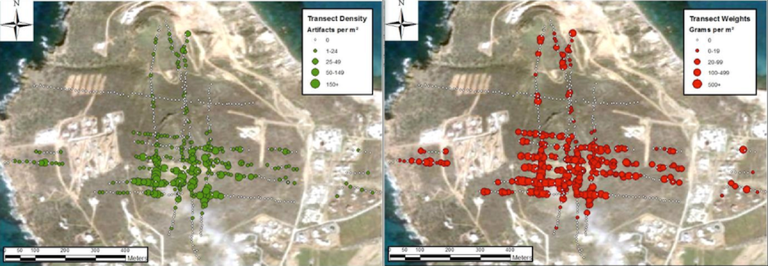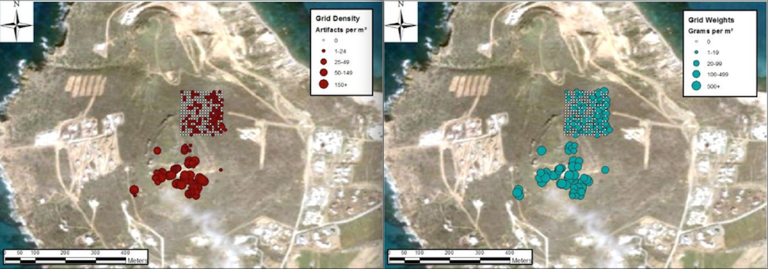Other finds
There was also a small quantity of flakes and cobbles/hammerstones made of emery (Figure 2), a raw material local to Naxos, albeit not from this western part of the island (Figure 3), together with even smaller quantities of marble, a stone that is also indigenous to the island. Pottery was extremely rare, the majority appearing to be post-Bronze Age in date.
Stage 1
In first stage all cultural material is counted and weighed en masse by collection unit, be that from transect, or grid. This provides us with a rapid impression of artefact density across the site (Figures 4-5).

Stage 2
The second stage involves studying each collection assemblage by artefact, separating the material into groups of period-specific diagnostics, which are then recorded in terms of their technology and form of modification (e.g. ‘denticulate on Levallois flake’). In certain instances we may then undertake a third stage of analysis where individual artefacts are provided with a larger range of metrical and techno-typological details, though one is always wary of the interpretative limitations of surface material and by extent the level of analysis appropriate for such finds.

Mesolithic Assemblage
Mesolithic Assemblage
Middle Palaeolithic Artefacts
Middle Palaeolithic Artefacts